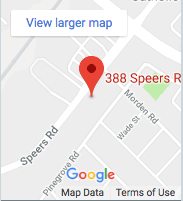Highly trained specialists perform laser eye surgery and, in most cases, patients feel that their lives are much improved as their need for prescription glasses or contacts is reduced or eliminated. However, like all surgery, there are certain risks involved.
Here’s what you need to know about laser eye surgery in order to make an informed decision.
Common Laser Procedures
There are four types of laser eye surgery commonly done in Canada.
Photo Refractive Keractectomy or PRK – The surgeon removes the outer layer of the cornea with a surgical blade and uses a laser beam, guided by a computer to vaporize tiny amounts of tissue under the surface of the cornea. Just enough tissue is removed to reshape the cornea in a way that corrects vision. The healing process takes about a week.
The downsides of PRK include:
- pain for the first few days, ranging from moderate to severe
- hazy vision while healing, which usually clears within the first week after surgery
- in some cases the eye will revert to its previous state within about six months and the patient may need a second operation or start wearing glasses again
Laser Assisted in situ Keratomileusis, better known as LASIK - LASIK is a more complicated procedure. First, the surgeon cuts a flap in the cornea with a sharp blade or laser, then lifts it and uses a computer-guided laser to remove pre-determined amounts of tissue from the inside layers of the cornea. Then the flap is replaced. Using this method allows the eye to heal more quickly than with PRK.
LASIK surgery uses Wavefront technology, which produces a detailed map of the eye that helps the surgeon make an even more exact correction to vision.
There is less post-operative pain with LASIK but, since the procedure involves cutting into the cornea, there is a greater risk of complications. You may experience:
- dry eyes, which can range from mild to significant and can affect your sight
- poor quality night vision due to halos and glare, which could affect your ability to drive at night
- a weakening and bulging of the cornea called corneal ectasia, which is a serious condition. Severe cases may need a corneal transplant or an implant.
A corneal infection (infectious keratitis), is a serious complication that may occur with both PRK and LASIK and may result in significant vision loss.
Laser Epithelial Keratomileusis or LASEK – LASEK is a procedure best suited to situations where only minor correction is needed. It’s a variation of PRK and LASIK. The surgeon cuts the outer layer of the cornea and uses alcohol to loosen and lift it in a single layer. A laser beam is then directed at tissue under the cornea, as with PRK. When the procedure is finished, the cornea is put back in place. Healing takes about two weeks.
LASEK surgery reduces the risk of some of the complications related to cutting a flap in the cornea, such as dry eyes and weakening of the eye, but does share some of the problems related to both PRK (pain, haze and regression) and LASIK.
Epi-LASIK – Epi-LASIK is modified LASEK. The outer layer of the cornea is removed with a mechanical device using a blunt, instead of a sharp blade.

